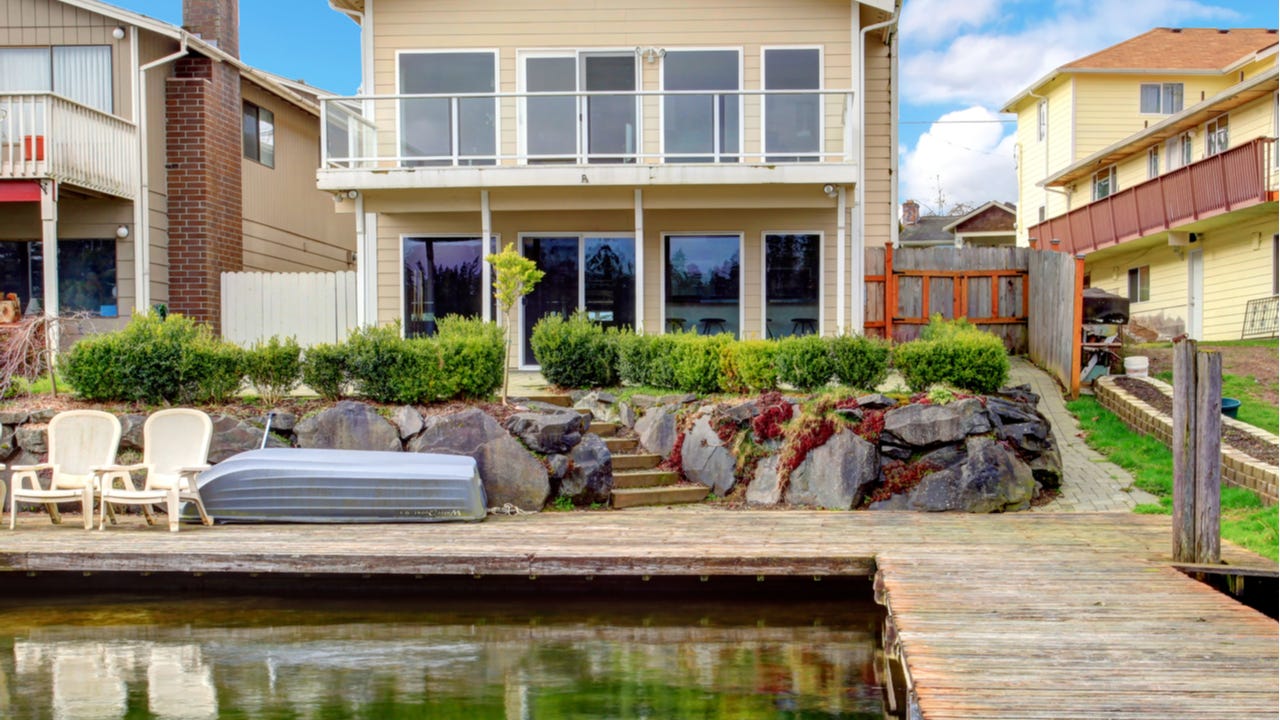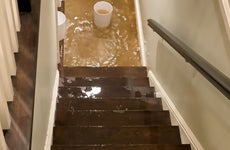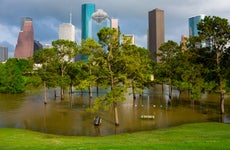How much flood insurance is required by mortgage lenders?

The Bankrate promise
At Bankrate we strive to help you make smarter financial decisions. While we adhere to strict , this post may contain references to products from our partners. Here's an explanation for .
Key takeaways
- Mortgage lenders require flood insurance on homes in certain FEMA-designated flood zones.
- Typically, the coverage requirement is either the full replacement cost of the home, the maximum amount allowed by the National Flood Insurance Program or the unpaid balance of the mortgage, whichever is less.
- You don’t need to buy flood insurance if your lender doesn’t require it, but since standard homeowners insurance doesn’t cover flood damage, it might still be worth getting a separate policy.
If you need a mortgage for a home in a flood zone, your lender will likely require you to purchase flood insurance. Here’s why, how much coverage you’ll need, what it’ll cost and more.
How much flood insurance do you need for a mortgage?
To get a conventional mortgage backed by Fannie Mae or Freddie Mac or an FHA, VA or USDA loan on a home in a Special Flood Hazard Area (SFHA), you’ll need flood insurance coverage. These areas are mapped by the Federal Emergency Management Agency (FEMA).
Most flood insurance coverage is provided via the National Flood Insurance Program (NFIP), which is available in many communities throughout the U.S. The NFIP offers coverage for the property itself up to $250,000, as well as up to $100,000 for personal property.
Typically, you’re required to have a policy that covers the full replacement cost, the unpaid balance of your mortgage or the maximum coverage allowed by NFIP, whichever is less.
If your home is higher in value, the $250,000 NFIP ceiling might not be enough. To cover that gap, you can get a supplemental flood insurance policy from a private company. These insurers aren’t as readily available like NFIP coverage is, however, and they might charge higher premiums and deductibles.
Why do mortgage lenders require flood insurance?
Mortgage lenders require flood insurance for the same reason they require homeowners insurance: to protect their interest in the property.
“If flood damage is suffered and funding is not available to repair, the home’s value diminishes significantly, which negatively impacts the lender and the homeowner,” says Kyle Herring, vice president at All American Public Adjusters in Austin, Texas. Note that even if the type of mortgage you’re getting isn’t subject to rules mandating flood insurance, your lender might require it anyway.
“A private lender who is not subject to the rules for federally-backed loans may also require you to have flood insurance, although there is no legal obligation for them to do so,” says Madelyn Rodriguez, a partner at Clausen Choquette, PLLC, in Boca Raton, Florida.
How much does a flood insurance policy cost?
The minimum flood insurance cost might be about $400 or less annually, according to Brian Bradley, personal insurance advisor for CBIZ, Inc., an insurance provider in Cumberland, Maryland.
If you’re in a high-risk zone, however, “the policy will be much more expensive — but it can be reduced if your home is positively elevated above the floodplain by obtaining an elevation certificate completed by a licensed surveyor,” says Bradley.
If NFIP coverage is available in your area, it’ll likely be the most affordable option. The average cost of NFIP insurance yearly is approximately $800, says Rodriguez, adding that “this amount varies greatly by the location of the property, amount of coverage needed and proximity to bodies of water.”
Flood insurance premiums can also increase from year to year, both for policies through the NFIP and private insurers.
“Most see increases ranging from 6 to 12 percent annually,” says Carolyn Rummel, president of Florida Operations at Meadowbrook Insurance Agency, based in Sarasota, Florida.
Additionally, flood zones and classifications can change. Your zone might be designated a high-risk zone later on, which means you might be required to get flood insurance or pay more for it.
“If you have lower policy limits, you may also want to increase your flood policy coverage limits in the future as the cost of construction increases,” says Rodriguez.
How to avoid the flood insurance requirement
The simplest way to avoid your mortgage lender’s flood insurance requirement is to buy a home outside of a flood zone. Of course, that might not be an option for some.
If possible, you could pay for the home in cash, but even then, you might still want to purchase flood insurance. Flooding happens on a near-daily basis throughout the U.S., and standard homeowners insurance doesn’t cover flood damage.
Related Articles



